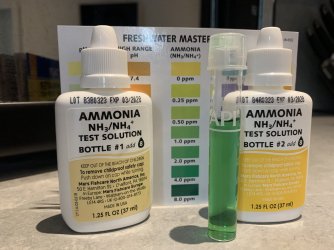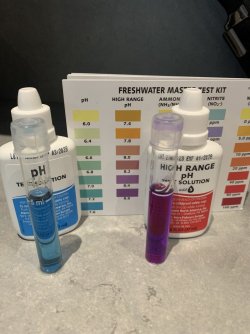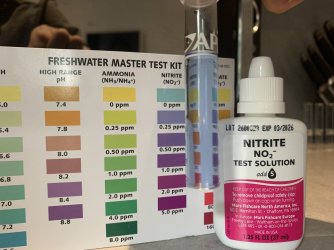Test in another 3 days, then another 3, then another 3 until the readings are ammonia less than 0.75 and nitrite over 2.
Other methods of fishless cycling say to add ammonia every time it drops to zero. But this adds so much ammonia that it is turned into a lot of nitrite - so much nitrite that the cycle stalls. TwoTankAmin did a lot of research into cycling in scientific papers and wrote the method on here so that if ammonia is only added when his method says nitrite cannot get high enough to stall the cycle. Each 1 ppm ammonia is turned into something like 3 ppm nitrite so it doesn't take much ammonia to get get 15 ppm nitrite.
______________________________________________________________________________________________________________________________________________
You can do a water change to replenish KH, but you can also add bicarbonate of soda. There may already be a tub in the kitchen; if not it's in the home baking aisle in the supermarket.
Remind me, your tank is about 130 litres? If it is, if the pH drops take out a small amount of the water, add 3 x level 5 ml spoonfuls of bicarbonate of soda, stir till it's all dissolved then pour it back into the tank.
This is for cycling only as it adds a lot of sodium to the water and the soft water fish you need will be harmed by all that sodium. At the end of the cycle we do do a very large water change which will remove it before getting fish.
When you have fish, you'll be doing weekly 50% water changes which will put back KH. Also, since you need fish which come from soft acidic water they'll be quite happy even if the pH drifts downwards.
Small fish-only plastic tubs are very useful for all sorts of things including mixing bicarb into tank water. If you eat yoghurt, or individual cheesecakes or trifles, save the pots





